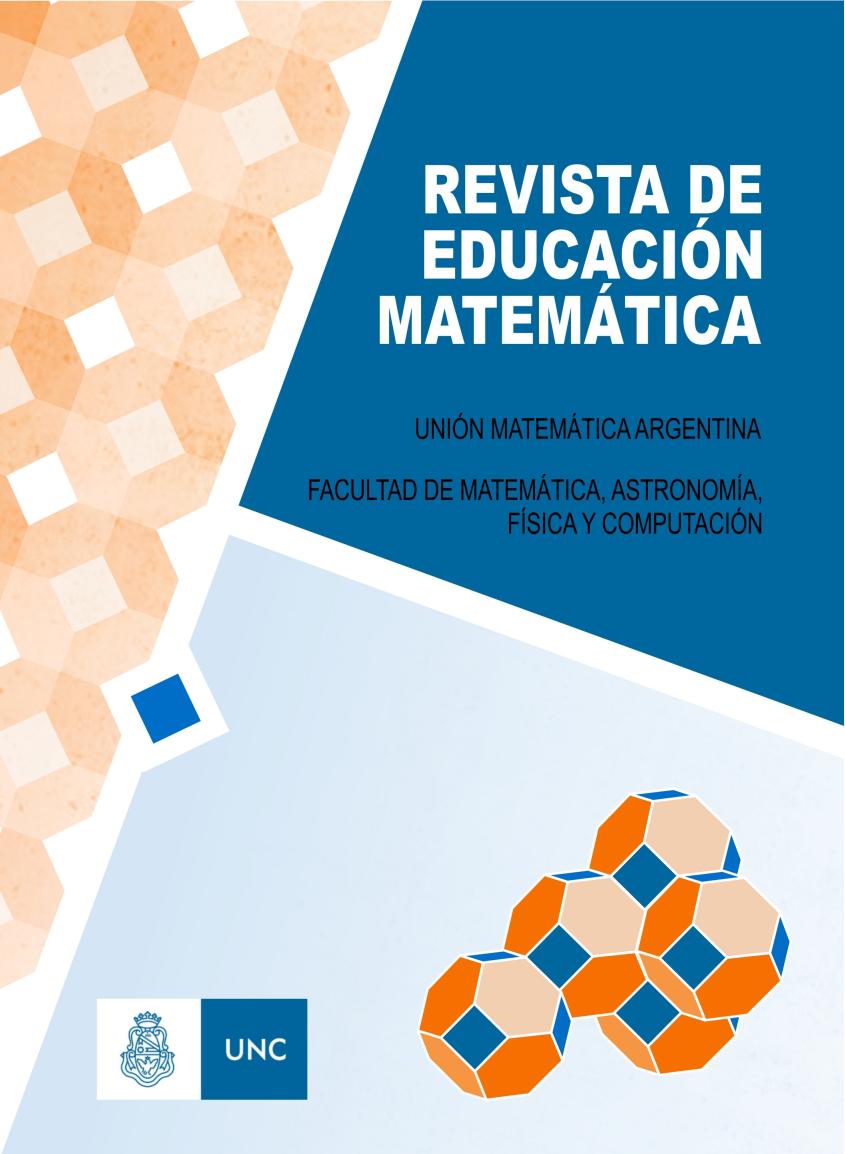The drag in a dynamic geometry program. Its domain of validity as a matter of interaction between students and teachers
DOI:
https://doi.org/10.33044/revem.37472Keywords:
Dynamic geometry, Drag, Teaching geometryAbstract
For more than two years we have been developing an investigation that aims to study the process of production of geometric and didactic knowledge of a group of teacher-students in interaction with their teachers, as a result of a work of geometric constructions mediated by the use of the program GeoGebra. The use of this program introduces a variable studied by different authors that makes adifference with the work in pencil and paper: the possibility of impregnating movement to the drawings that are constructed, that is, “dragging” them. The analysis that we developed of the work carried out by the teacher-students, around geometric constructions, has allowed us to question our selves about the relationship between dragging, the properties of the figure and the validity of the construction. In this context, “the dragging test” and its relationship with the use of certain properties was insufficient for us to interpret the elaborations of the teacher-students in terms of knowledge production.In this article we propose to problematize this issue from the analysis of some episodes that occurred in the classes of the Geometry Seminar of the Bachelor of Mathematics Teachingfor Primary Education of the National Pedagogical University (Unipe).
Downloads
References
Acosta Gempeler, M. (2005). Geometría experimental con Cabri: una nueva praxeología matemática. Educación Matemática,17(3), 121-140.
Arcavi, A., y Hadas, N. (2003). Computer mediated learning: An example of anapproach.International Journal of Computers for Mathematical Learning, 5(1),25-45.
Arsac, G., Chapiron, G., Colonna, A., Germain, G., Gichard, Y., y Mante, M.(1992). Initiation au raisonnement déductif au collège. Lyon, Francia: Presses Universitaires de Lyon. Collection IREM.
Arzarello, F., Olivero, F., Paola, D., y Robutti, O. (2002). A cognitive analysis of dragging practices in Cabri environments. Zentralblatt fur Didaktik der Mathematik/ International Reviews on Mathematical Education,34(3), 66-72.
Berthelot, R., y Salin, M.-H. (1992). L’enseignement de l’espace et de la géométrie dans la scolarité obligatoire. (Tesis Doctoral no publicada). Université Sciences et Technologies-Bordeaux I, Bordeaux, Francia.
Berthelot, R., y Salin, M.-H. (1994). L’enseignement de la géométrie ‘a l’ècole primaire.Grand N(53), 39-56.
Damisa, C., M.L., D., y Piedra Cueva, M. (2017). Geometría en el aula con GeoGebra. Una experiencia de trabajo colaborativo en la escuela. Montevideo, Uruguay: Grupo Macro Editores.
Fregona, D. (1995). Diferentes dominios de declaración sobre las figuras. Ponencia de la IX CIA EM.
Fregona, D. (2005). Prácticas ostensivas en la enseñanza de la matemática.(Vol. 18). México DF, México: Comité Latinoamericano de Matemática Educativa A. C.
Itzcovich, H. (2005). Iniciación al estudio didáctico de la Geometría. Buenos Aires, Argentina: Libros del Zorzal.
Laborde, C. (1997). Cabri-geómetra o una nueva relación con la geometría. En L. Puig (Ed.), Investigar y enseñar. Variedades en educación matemática(p. 33-48). Grupo Editorial Iberoamericano.
Laborde, C., y Capponi, B. (1994). Cabri-géomètre constituant d’un milieu pourl’ apprentissage de la notion de figure géométrique. Recherches en didactiquedes mathématiques,14(1.2), 165-210.
Olivero, F. (2003).The proving process within a dynamic geometry environment.(Tesis Doctoral no publicada). University of Bristol, Bristol, Inglaterra.
Parzysz, B. (1988). Knowing vs Seeing. Problems of the plane representation of space geometry figures. Educational Studies in Mathematics,19(1), 79-92.
Ratsimba-Rajohn, H. (1977). Etude didactique de l’introduction ostensive des objets mathématiques [Memoire de Diplôme d’études Approfondies no publicada].
Restrepo, A. M. (2008). Genese Instrumentale du deplacement en Geometrie Dynamique chez des eleves de 6 eme (Tesis Doctoral no publicada). Université Joseph-Fourier-Grenoble I, Grenoble, Francia.
Sadovsky, P., Parra, C., Itzcovich, H., y Broitman, C. (1998). Matemática. Documento de trabajo Nº5. La enseñanza de la Geometría en el 2ºCiclo. GCBA(Inf. Téc.).
Soury-Lavergne, S. (2011). De l’intérêt des constructions molles en géométrie dynamique. MathémaTICE, 25(1), 1-17.
Downloads
Published
How to Cite
Issue
Section
License

This work is licensed under a Creative Commons Attribution-ShareAlike 4.0 International License.
Aquellos autores/as que tengan publicaciones con esta revista, aceptan los términos siguientes:
- Los autores/as conservarán sus derechos de autor y garantizarán a la revista el derecho de primera publicación de su obra, el cuál estará simultáneamente sujeto a la Atribución-CompartirIgual 4.0 Internacional (CC BY-SA 4.0), que permite:
- Compartir — copiar y redistribuir el material en cualquier medio o formato
- Adaptar — remezclar, transformar y construir a partir del material
- La licenciante no puede revocar estas libertades en tanto usted siga los términos de la licencia
- Los autores/as podrán adoptar otros acuerdos de licencia no exclusiva de distribución de la versión de la obra publicada (p. ej.: depositarla en un archivo telemático institucional o publicarla en un volumen monográfico) siempre que se indique la publicación inicial en esta revista.
- Se permite y recomienda a los autores/as difundir su obra a través de Internet (p. ej.: en archivos telemáticos institucionales o en su página web) después del proceso de publicación, lo cual puede producir intercambios interesantes y aumentar las citas de la obra publicada. (Véase El efecto del acceso abierto).










